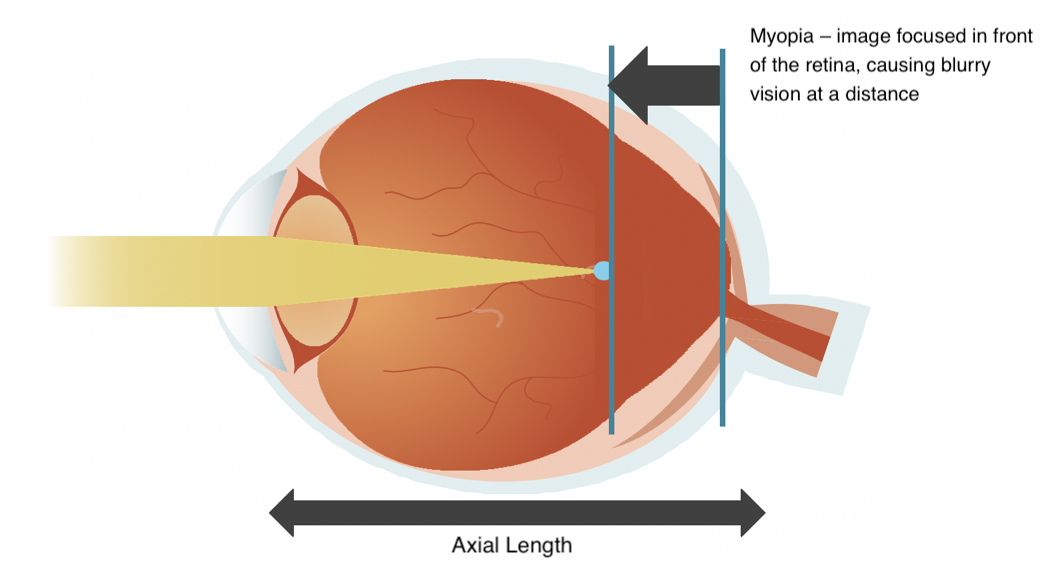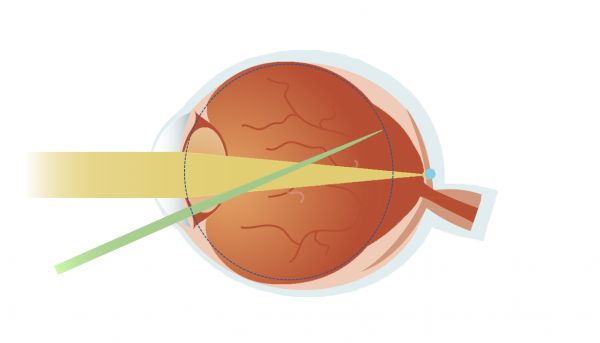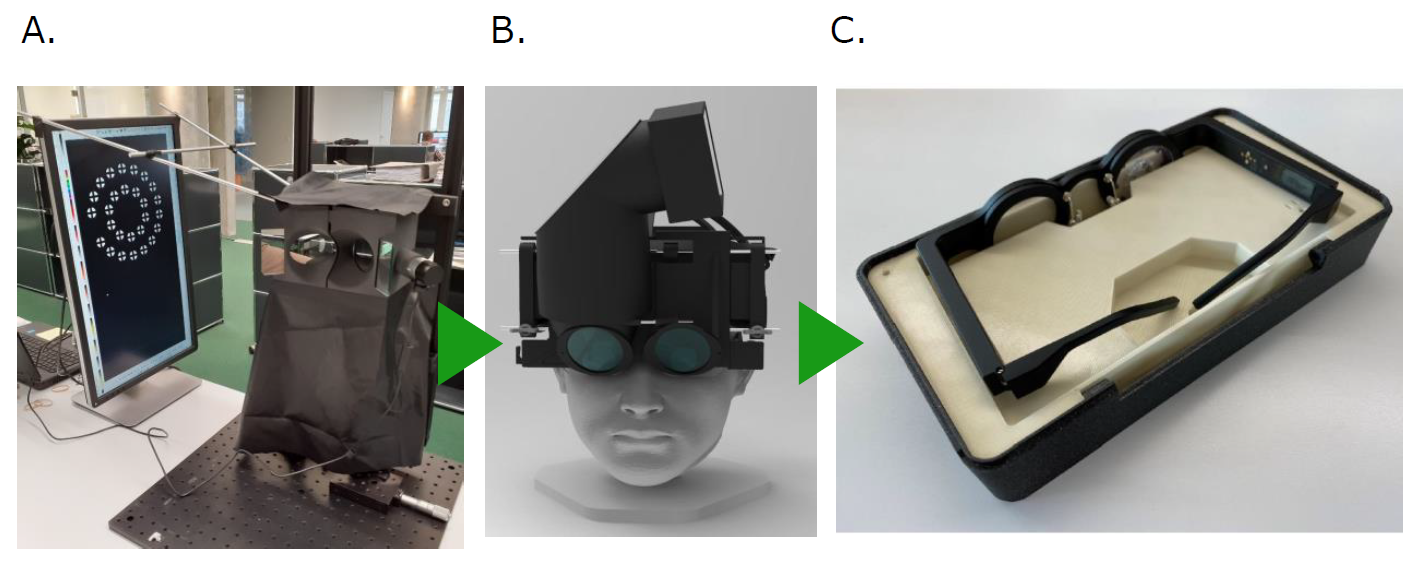Wearable Device for Myopia Control
Myopia, or nearsightedness, is a refractive vision disorder which causes blurred sight at a distance. It occurs when the length of the eye (known as axial length) is too great; myopia progresses as axial length increases with age, until the early 20s. Myopia currently affects 2.56 billion people worldwide and is projected to affect 3.4 billion people by 2030, if current trends remain unchanged(*1). Myopia increases the risk of developing sight-threatening diseases such as myopic maculopathy, retinal detachment, and glaucoma - making a measurable impact on society(*2). Today, children in East Asia (including Japan, China, Hong Kong, Taiwan, South Korea, and Singapore) develop myopia at a high rate; for example, 96.5% of 19-year-old males suffer from myopia in Seoul(*3). Myopia also affects over 40% of individuals over the age of 12 years in the U.S.(*4)

*2 Flitcroft DI. The complex interactions of retinal, optical and environmental factors in myopia aetiology. Prog Retin Eye Res. 2012 Nov;31(6):622-60
*3 Dolin E. The myopia boom. Nature 2015 Mar 19;519(7543):276-8

Kubota Glass technology works to reduce the increase in axial length associated with myopia by projecting myopically-defocused virtual images generated using micro-LEDS on the peripheral visual field to actively stimulate the retina. Passive stimulation using myopic defocus is already in use in the US with a contact lens, "MiSight® 1 day" by CooperVision, which is U.S. Food and Drug Administration (FDA) approved to slow the progression of myopia. This product, which uses multifocal contact lens technology, passively stimulates the entire peripheral retina with light myopically defocused by the non-central power of the contact lens. Kubota Glass technology leverages nanotechnology in its electronic glasses-based device and seeks to reduce the progression of myopia by actively stimulating the retina for shorter periods while maintaining high-quality central vision and not affecting daily activities. The company is planning to submit the full data for scientific publication.

Kubota Vision conducted a clinical study in early 2020 with an electronic tabletop optical projection device (A) that embodied Kubota Glass technology. The company monitored the effect of the application of a myopically-defocused stimulus on the retina on axial length in 12 subjects of aged 21 to 32 years (7 Asian, 4 White, and 1 Hispanic subjects; 9 males and 3 females) with spherical refractive error of -3.5D〜0.0D. The results of the study demonstrated that axial length decreases with the application of projected myopically-defocused images in the test eye compared to the control eye, which has not been reported in the literature. The company also completed a successful proof-of-concept (POC) clinical study to validate the concept of a wearable myopia-control device based on Kubota Glass technology (B) in August 2020. Based on these results, the company has completed the first spectacle-style wearable prototype based on Kubota Glass technology (C).
Kubota Vision continues to advance its program. Further clinical studies will be conducted to verify the changes in axial length induced by myopically-defocused virtual image projection over a longer period of time. The company is also working on product design improvements and plans additional clinical studies for regulatory approvals.
Kubota Vision is also planning to use the Kubota Glass technology to develop smart contact lenses for the reduction of myopia progression. The development plan for a smart contact lens with Kubota Glass technology will be disclosed as the project progresses. The company envisions applications of Kubota Glass technology in augmented reality (AR) devices and virtual reality (VR) devices to protect children's vision through myopia treatment.














